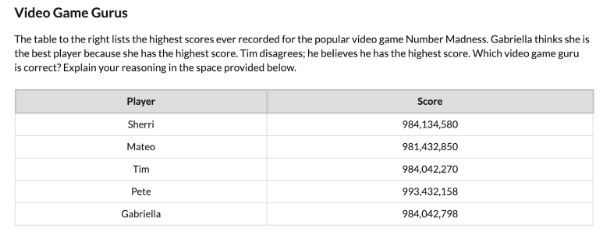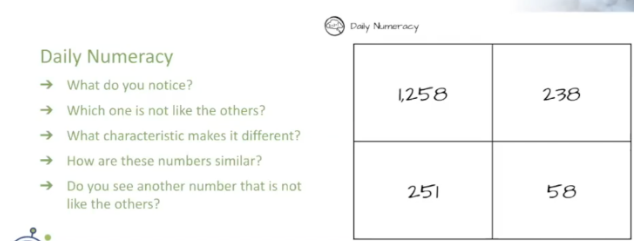Insights is a SmartBrief Education Originals column that features perspectives from noted experts and leaders in education on the hot-button issues affecting schools and districts. All contributors are selected by the SmartBrief Education editorial team.
How many of your students love math? How many say they hate it or that they’re not “a math person”? Developing some social-emotional learning, or SEL, skills with math may get the latter group to change their minds.
While math is often valued for being a logical, objective discipline, that doesn’t mean all students feel the same way about it. Just the thought of doing math may trigger feelings of joy or stress or fear.
Pandemic-related school closures and inequities in education may worsen negative feelings. Students who have unfinished learning in math may feel heightened anxiety as they work to master grade-level standards while also filling in gaps from prior years.
All of these feelings and emotions make math well-suited to the teaching of social-emotional learning. Teaching mathematics doesn’t just involve developing the mathematician in each child; it involves developing the whole child. Applying SEL in math lessons can support and engage students in their learning — and help them build a lifelong love for math.
Following are examples of how teachers can integrate SEL into math instruction to support the development of five core SEL competencies: self-management, self-awareness, social awareness, relationship skills, and responsible decision-making. While the sample exercises below are from a mathematics curricula called STEMscopes Math, similar lessons can be implemented in any math classroom.
Self-management
Self-management is just that: having the skills necessary to effectively manage one’s choices and behavior. It involves identifying emotions and choosing productive responses — especially when times are hard! One way for students to develop self-management is through writing. In an exercise about the way students view math, students write out their mathematical thoughts and ideas, expressing both their intellectual and emotional reactions to math content.

Writing can help students reflect on their comprehension, engagement and feelings about a lesson. It can also help students understand the distinction between feelings and behaviors. Identifying and using that space between “feeling” and “reacting” to intentionally choose the most positive response is something we all grapple with throughout life. As students become more effective in recognizing and managing their emotions, they see more choices in regard to responding to difficulties. Increasing self-management can often be seen in a student’s degree of initiative, frustration tolerance and resilience in the face of difficulty.
Self-awareness
Self-aware students are able to recognize their own emotions, thoughts and values, and how these influence their behavior. A class exercise that blends SEL skills with math such as the one below can help students practice self-awareness by becoming attuned to their strengths and limitations. It also helps them monitor what they say and how they say it.
This type of exercise poses a question, then asks students to make a claim they will support mathematically. After formulating their argument, they debate their ideas in large or small groups. As students exchange ideas, they affirm their knowledge and discover gaps in their own understanding.

Before breaking into groups, students may need a quick reminder that the exercise is not about determining who is right or wrong. Instead, it is a chance to learn about themselves and to become mathematical thinkers who are able to respectfully agree or disagree with others.
Social awareness
Social awareness involves the ability to understand and empathize with others. Teachers can use informative articles and videos to show students how people use math to address relevant social and ecological issues. Reading and watching current events stories serve the dual purpose of making students socially aware and demonstrating the importance of math in daily life. Indeed, math class is an ideal place to illustrate how STEM offers a path toward designing solutions to real-world problems — and buildsSEL skills with math.
Relationship skills
Developing good interpersonal skills — such as the ability to communicate clearly or work collaboratively — is an important part of SEL. Exercises like the one below let students practice relationship skills while reasoning with numbers.

Here, the teacher poses a series of open-ended questions, giving students adequate time to observe and formulate their answer to each question. Hand signals, such as those illustrated below, can help. The use of these gestures helps shy students answer and build confidence, while helping others refrain from blurting out their answers before everyone has a chance to respond.

These practices can help students build and reinforce skills such as listening actively and communicating clearly and succinctly while resisting social pressures that discourage curiosity. It’s a helpful tool that also combines SEL skills with math.
Responsible decision-making
The development of the preceding core competencies leads to the ultimate goal of responsible decision-making. Students who effectively manage their emotions and thoughts, respect others, and communicate and collaborate effectively while problem-solving are well equipped to make sound decisions.
Teachers may want to consider using a goal sheet that offers a tangible way for students to see the outcomes of their decisions. Establishing personal goals helps students gain a sense of autonomy. Achieving personal goals helps them achieve a sense of self-efficacy.

Supporting students in math and beyond
The cultivation of SEL skills with math lessons enhances the process of learning. It encourages students to explore, experiment and persist in the struggle rather than focusing solely on getting the “right answer.” It helps students see mistakes not as failures but as opportunities to learn, which supports a growth mindset. In turn, this helps to create confident, curious, empathetic learners who are capable of solving problems in math and beyond.
Judy Zimny is the vice president of the National Institute for STEM Education, where she is focused on working collaboratively with educators to increase the number and diversity of young adults capable of — and interested in — pursuing STEM or STEM-related careers. She is on the leadership team for STEMscopes Math.
*All illustrations courtesy of STEMscopes Math.
_______________________________
Subscribe to SmartBrief’s FREE email newsletter to see the latest hot topics on EdTech. It’s among SmartBrief’s more than 250 industry-focused newsletters.
